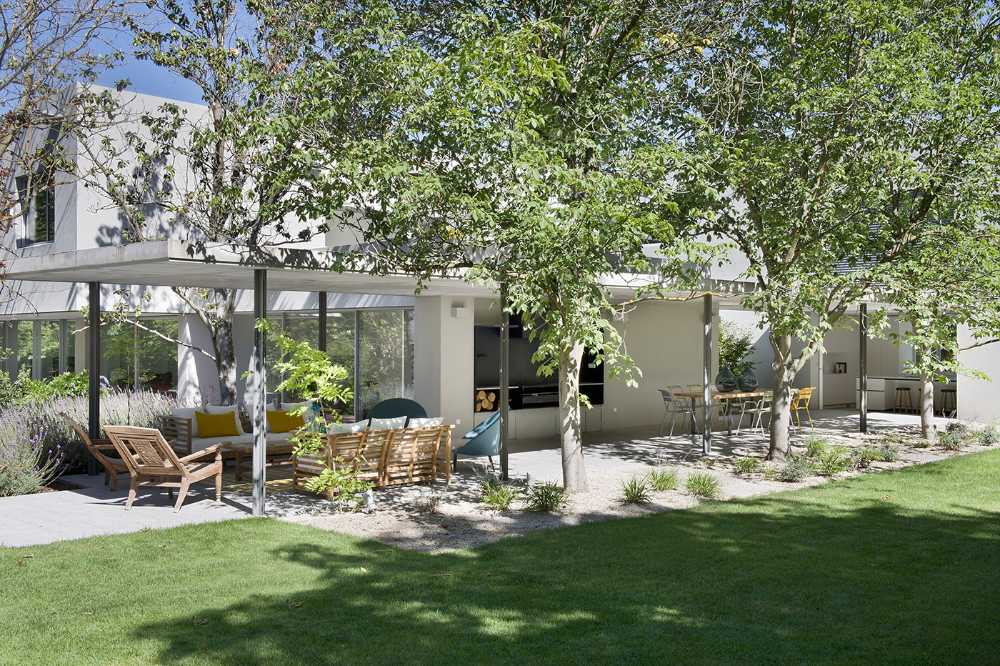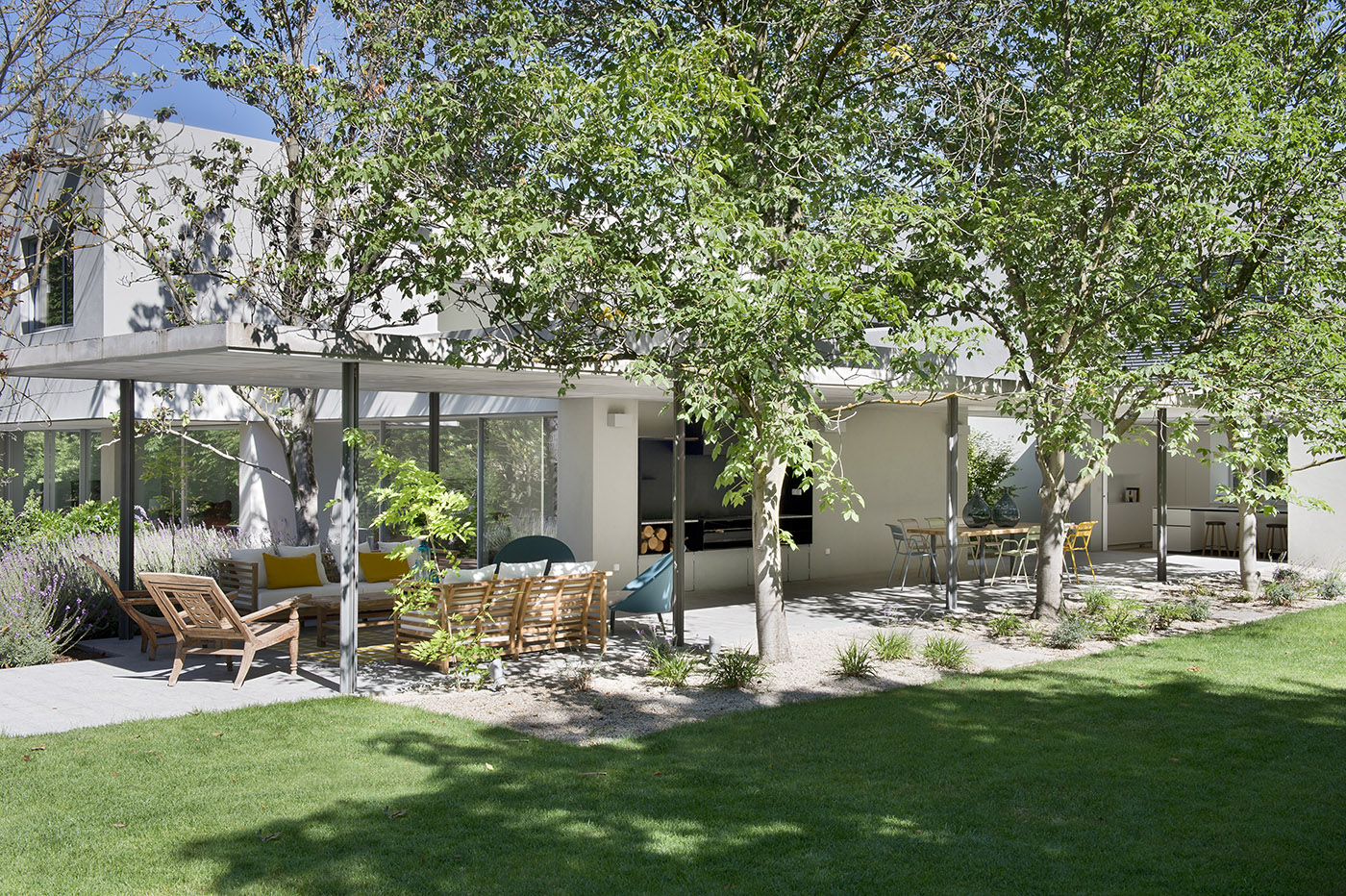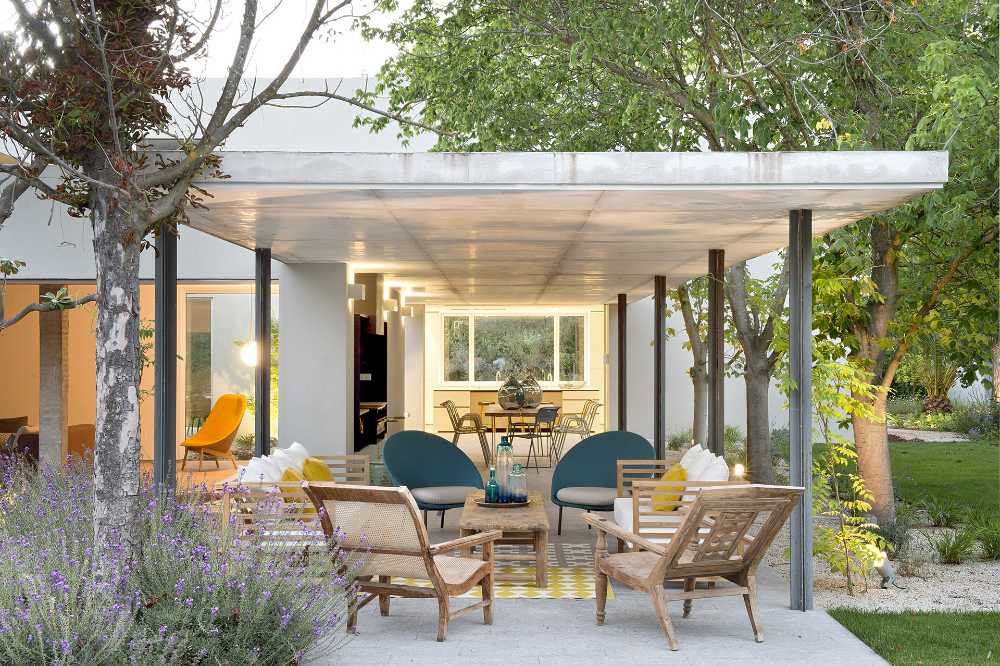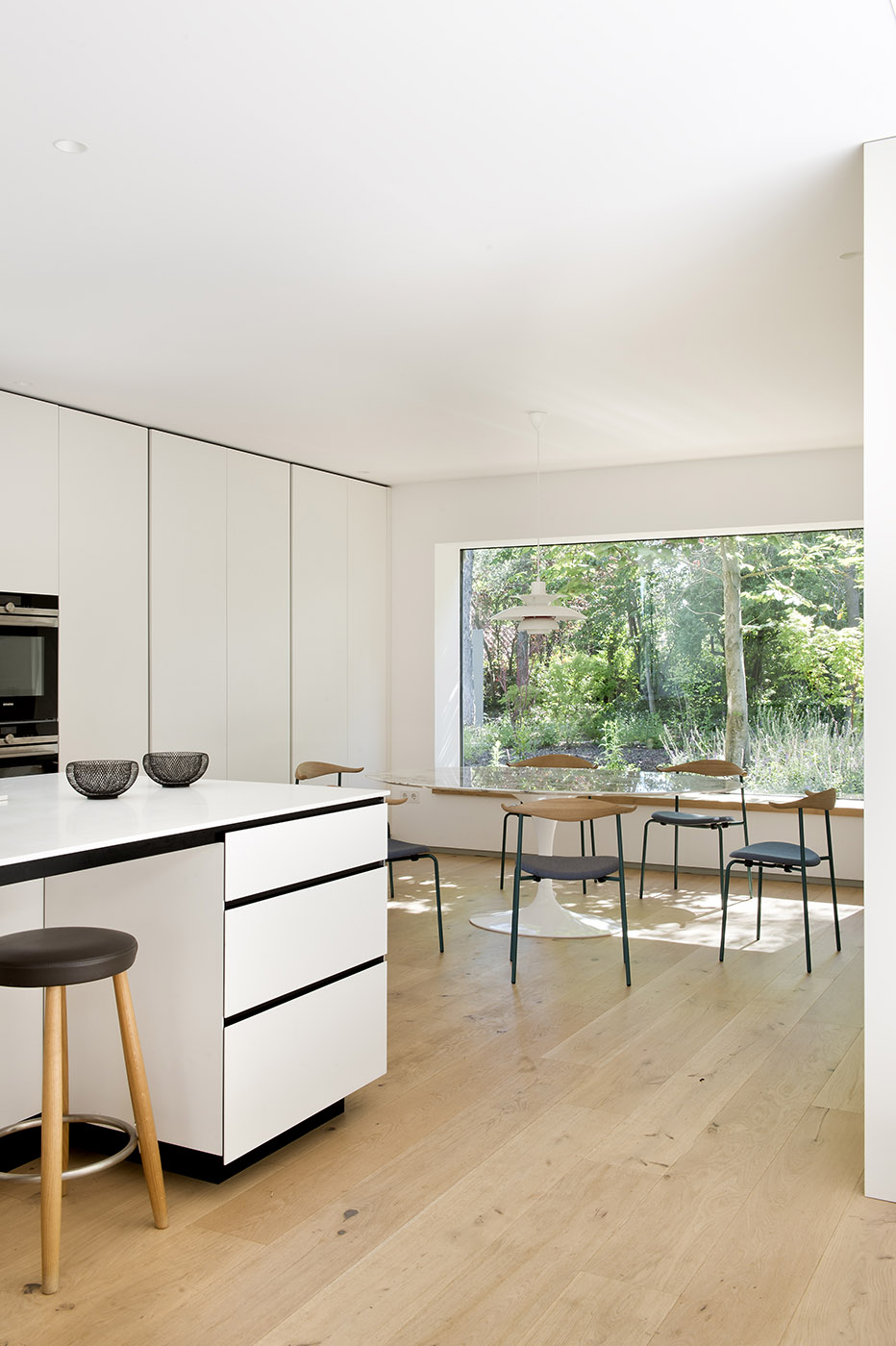The choice fell on a house built in the 1960s with a magnificent garden, but a very compact and massive envelope. The designers then decided to perforate the house in a way to give the idea, not so much that the house overlooks the garden, but rather that the garden penetrates inside the house. Voids were created in the architecture so as to perceive that the vegetation could enter the house.


House in L: contemporary architecture for a 1960s house
The request from the owners, which then sparked the design of the Abaton studio, was the search for the warmth that only a home can provide. For this reason, they did not opt for a new construction but for the renovation of an existing house with a garden that could be transformed through the new contemporary architecture.
- #Europe
- #Spain
- #Residence
- #Villa
- #Building extension
- #Restyling
- #Renovation

This intention is then read throughout the house and is very well read in the connection between the porch and the kitchen, which gives the idea that the kitchen is part of the porch itself and not of an internal space. The living room was originally divided into three spaces at different heights, which have been deliberately maintained, creating different spaces that fit into each other.

In many renovation projects, architects and homeowners have shared the concept of architecture as a space where not only the structure, but also furniture, textures, materials, garden, and green elements come into play. All the details contribute to creating the feeling of warmth that characterizes a way of living. The result is a very familiar, open, welcoming home in constant contact with nature.

Gallery
Article by Giulia Schellino
Photo: Belén Imaz, Carlos Muntadas Prim








